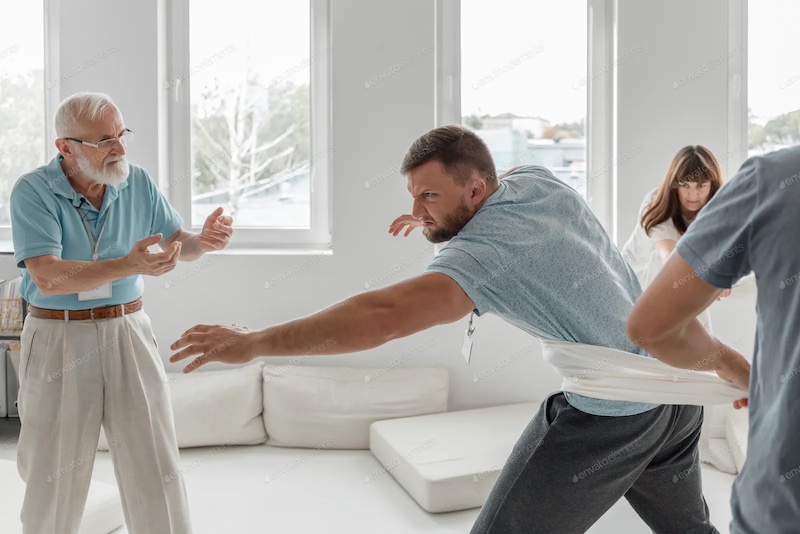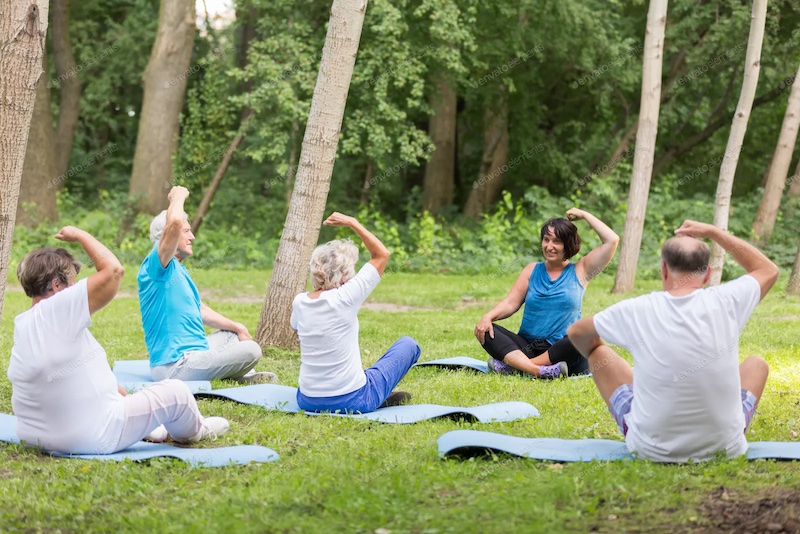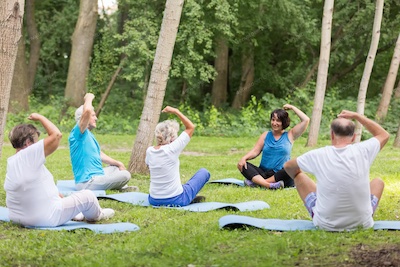Aging is an inevitable process that affects everyone as they progress through life. As individuals age, the body undergoes various physiological changes that can impact different systems and functions. However, emerging evidence suggests that engaging in regular physical activity can profoundly influence the aging process, helping individuals age gracefully and maintain their vitality. This article aims to explore the role of exercise in promoting graceful aging, examining its impact on various aspects of health, including cardiovascular health, muscle preservation, bone density, cognitive function, and mental well-being.
Understanding the Aging Process
The aging process is a complex biological phenomenon characterized by a gradual decline in physiological functions. At the cellular level, aging involves processes such as telomere shortening, DNA damage accumulation, and cellular senescence. Telomeres, the protective caps at the ends of chromosomes, shorten with each cell division, eventually leading to cell senescence or apoptosis. DNA damage can accumulate over time due to environmental factors and oxidative stress, contributing to age-related health issues. Cellular senescence, the irreversible growth arrest of cells, leads to tissue dysfunction and plays a role in aging-related diseases.

Impact of Aging on Muscles, Bones, and Cognitive Function
As individuals age, various changes occur in the musculoskeletal and cognitive systems. Sarcopenia, the age-related loss of muscle mass and strength, is a significant concern during the aging process. Reduced muscle mass can result in decreased mobility, increased risk of falls, and impaired metabolic function. Engaging in regular exercise, particularly resistance training, can help counteract sarcopenia and preserve muscle mass and strength.
Bone density naturally decreases with age, leading to an increased risk of osteoporosis and fractures. Weight-bearing exercises, such as walking, running, and strength training, have been shown to enhance bone density and reduce the risk of osteoporosis.
Cognitive decline is a common concern with aging, affecting memory, attention, and executive functions. Regular physical activity has been linked to improved cognitive function, including better memory, attention, and problem-solving skills. Exercise is also associated with increased brain-derived neurotrophic factor (BDNF) levels, promoting brain health and neuroplasticity.
Benefits of Regular Exercise on Aging
Engaging in regular exercise offers numerous benefits for aging individuals. Aerobic exercise has a significant positive impact on cardiovascular health, improving heart function, reducing blood pressure, lowering LDL cholesterol levels, and enhancing circulation. These cardiovascular benefits can lead to a reduced risk of heart disease, stroke, and other cardiovascular-related conditions.
Strength training exercises help preserve muscle mass and strength, combating the effects of sarcopenia. By maintaining strong muscles, individuals can retain their mobility and independence as they age. Additionally, weight-bearing exercises are crucial in preventing osteoporosis and reducing the risk of fractures in aging individuals.
Exercise has a profound impact on brain health, promoting neuroplasticity and improving cognitive function. It has been associated with a reduced risk of cognitive decline and neurodegenerative diseases such as Alzheimer’s. Moreover, regular physical activity enhances the immune system, reducing the risk of infections and supporting overall health. Exercise also helps reduce chronic inflammation, which is associated with various age-related diseases.
Mental health is another area positively influenced by exercise. It is a powerful tool for promoting mental well-being, reducing symptoms of depression and anxiety, boosting mood, and improving overall emotional resilience. Regular exercise can lead to a higher quality of life in aging individuals by promoting vitality, energy levels, and a sense of accomplishment.
However, besides all the exercise and strict routine, don’t forget to take some time and enjoy your everyday life. Go out with family and friends, have fun, organize a get-together with good food and bounce house rentals Morgan Hill.
Types of Exercises for Aging Gracefully
A well-rounded exercise routine for aging individuals should include a combination of aerobic exercises, strength training, flexibility exercises, and mind-body practices. Aerobic exercises, such as walking, swimming, and cycling, improve cardiovascular endurance and lung capacity.
Strength training exercises involve the use of weights, resistance bands, or body weight to challenge the muscles. These exercises are essential for preserving muscle mass, enhancing muscular strength, and preventing sarcopenia.
Flexibility exercises involve stretching the muscles and joints, increasing their range of motion. Stretching regularly can help improve flexibility, reduce muscle stiffness, and alleviate joint pain. Balance exercises focus on improving stability and coordination to prevent falls, which are a common concern for aging individuals.
Mind-body practices, such as yoga and tai chi, combine flexibility and balance training with controlled movements, deep breathing, and meditation. These practices provide a holistic approach to health, fostering a sense of inner peace and mindfulness.
Exercise Considerations for Different Age Groups
Each age group has specific considerations when it comes to exercise. Young adults can establish and maintain healthy exercise habits that lay the foundation for lifelong fitness and health. Middle-aged adults need to focus on maintaining fitness and preventing age-related decline, which can be achieved through aerobic activities, strength training, and flexibility exercises.
Seniors require tailored exercise programs that consider individual health conditions and physical limitations. Low-impact exercises that focus on improving balance, flexibility, and strength are particularly important for promoting healthy aging and preventing injuries.

Overcoming Barriers to Exercise
Common barriers to regular physical activity can hinder individuals from engaging in exercise, regardless of age. Time constraints, lack of motivation, or fear of injury are some of the obstacles that individuals may face. By identifying and addressing these challenges, individuals can create a sustainable exercise routine that fits their lifestyle.
Safety concerns are of utmost importance, especially for older adults. Consulting with a healthcare provider before starting an exercise program is essential, particularly if there are existing health conditions. Proper warm-up and cool-down routines, adequate hydration, and using appropriate footwear and gear are measures to ensure safe exercising.
Incorporating exercise into daily life is crucial for making it a regular habit. Simple strategies such as taking short walks during breaks, incorporating physical activity into daily tasks, and enlisting the support of friends or family members can help make exercise a part of one’s daily routine.
Developing an Exercise Plan for Aging Gracefully
Creating an individualized exercise plan is essential to account for personal fitness levels, health conditions, and individual preferences. Working with fitness professionals or physical therapists can help design a safe and effective exercise program that addresses specific needs and goals. Setting realistic and achievable goals is vital to stay motivated and track progress. Goals should be specific, measurable, attainable, relevant, and time-bound (SMART). Regularly reassessing and adjusting goals can help maintain enthusiasm and ensure continued progress. Monitoring progress is crucial for gauging the effectiveness of the exercise program and making necessary adjustments. Keeping track of exercise frequency, duration, and intensity can help identify areas of improvement and celebrate achievements.
The impact of regular exercise on aging gracefully is significant and multi-faceted. Engaging in physical activity can positively influence various aspects of health, from cardiovascular function and muscle preservation to bone density, cognitive function, and mental well-being. Regardless of age, incorporating a well-rounded exercise routine that includes aerobic activities, strength training, flexibility exercises, and mind-body practices can help individuals age gracefully and maintain their health, independence, and overall quality of life.
The evidence presented underscores the importance of embracing physical activity as a powerful tool to promote graceful aging. Exercise not only enhances physical health but also offers benefits for mental and emotional well-being. By prioritizing exercise and adopting a proactive approach to health, individuals can unlock the benefits of aging gracefully, empowering themselves to live life to the fullest in their later years.
As we continue to advance our understanding of the relationship between exercise and aging, it becomes increasingly evident that regular physical activity is not only essential for maintaining health but also holds the key to aging gracefully. By committing to a consistent exercise routine and making physical activity a priority, individuals can enhance their quality of life and defy the limitations often associated with aging. Embracing the transformative power of exercise allows us to embrace the aging process with grace and vitality, ensuring that our later years are characterized by health, happiness, and a sense of fulfillment.
In conclusion, the role of exercise in aging gracefully cannot be understated. It is a powerful tool that can positively impact various aspects of health and well-being, from physical strength and cardiovascular health to cognitive function and mental well-being. Regardless of age, incorporating regular exercise into one’s life is an investment in a healthier, happier, and more fulfilling future. So, let us take the first step towards aging gracefully by lacing up our sneakers and embracing the transformative power of exercise.

